.jpg)
Mike Gauthier
03.24.2020
Please Don’t Copy the Coffee Cans, Soda Bottles and Other Ill-Advised Accessories We See in the Field. Try a Pack of Disposable Funnels on Us.
Here’s a real head scratcher we see all too often at industrial plants.
They buy top-of-the-line lubricants to support their equipment’s performance. Maybe they also regularly filter these oils in storage to remove harmful contaminants.
But then, when handling and transferring the lubricants, they do it with dirty, used containers and universal funnels.
This habit completely compromises all previous steps – exposing the oil to all sorts of contamination and posing risks to critical equipment. Here’s a sampling of oil transfer container fails we’ve seen recently.
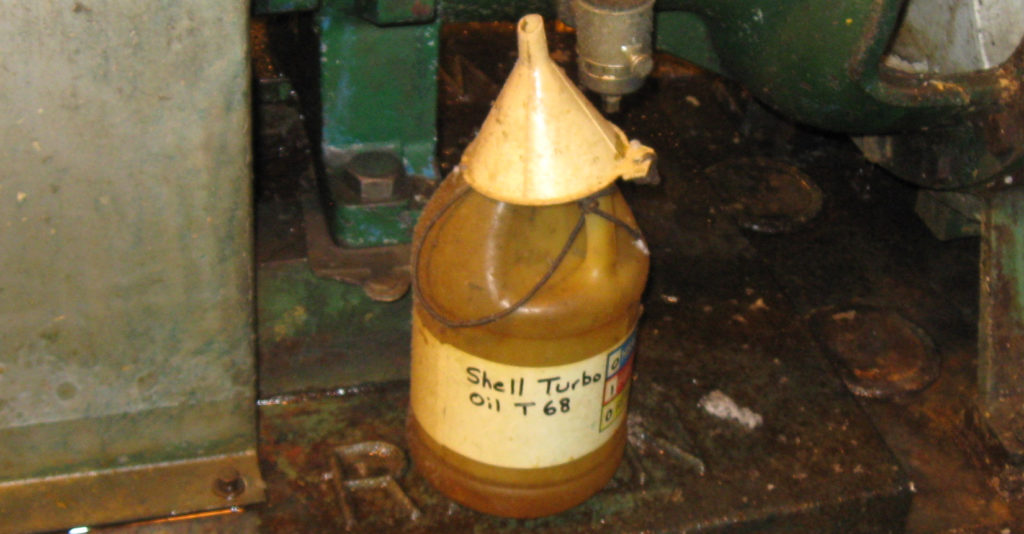
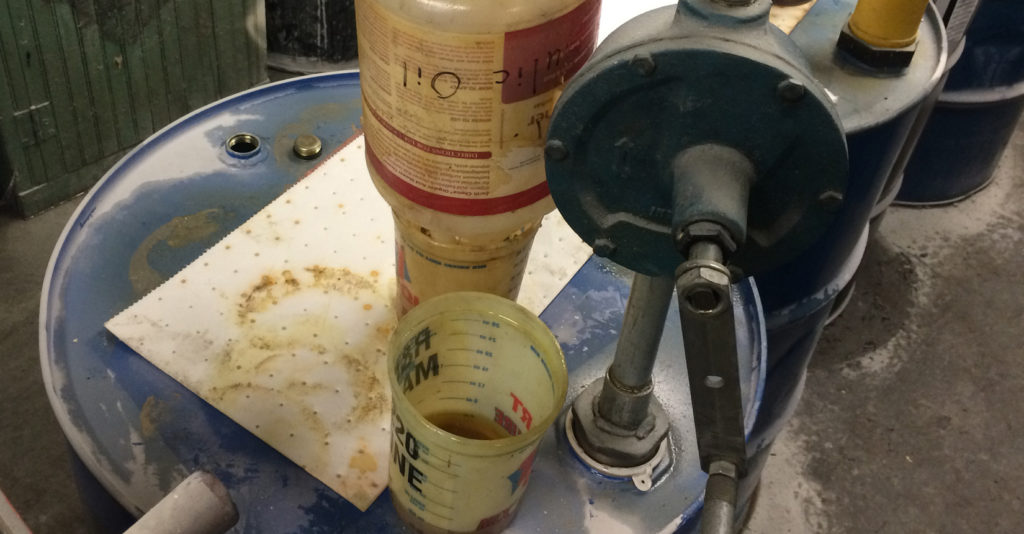
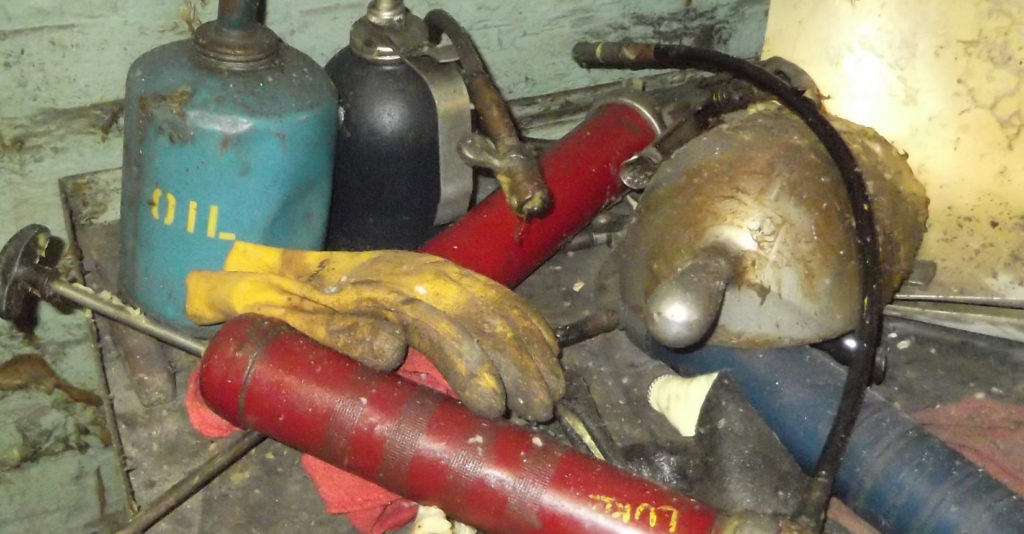
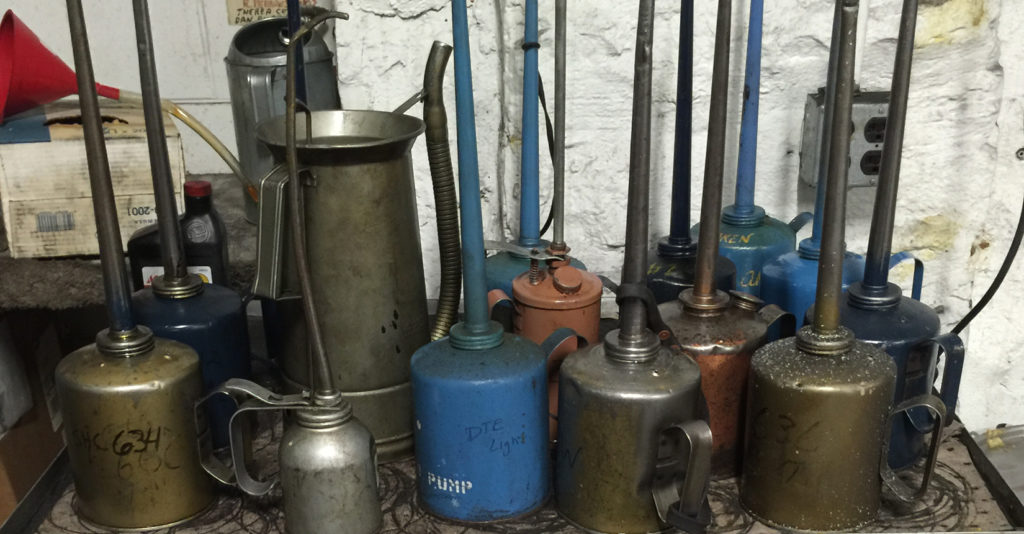
What’s the big deal?
We can draw a direct line from any of these conditions to particulate contamination and cross-contamination of your oil.
Common causes of lubricant contamination, deterioration and mixing in transfer and handling include:
- Open containers exposing lubricant to external moisture and particulate
- Damaged containers
- Dirty dispensing equipment
- Poor outdoor storage practices
- Mixing different brands or types
- Exposure to excessive heat or cold
- Shelf-life expiration
- Lubricant mislabeling
If any of this is happening in your facility, let me put it to you simply: You’re risking the life of your oil and the reliability of your equipment.
Instead, here’s what you should do:
- Only use secondary containers that are specifically designed for transferring lubricants from bulk storage tanks, totes, drums and 5-gallon pails to your machinery.
- Select a color-coded container system for easy, accurate oil identification. Trico’s Spectrum oil containers are a great choice.
- Switch to disposable oil funnels and use a clean new funnel each time you pour. (See below to get your first pack of funnels for free.)
- Discard all non-system-related containers and funnels.
- Create standard operating procedures that clearly identify which color represents which lubricant, and publish those SOPs on wall and cabinet charts where everyone can see them.
- Create a weekly PM work order to maintain order and cleanliness in the lubricant storage area(s).
A clean, organized oil transfer container cabinet
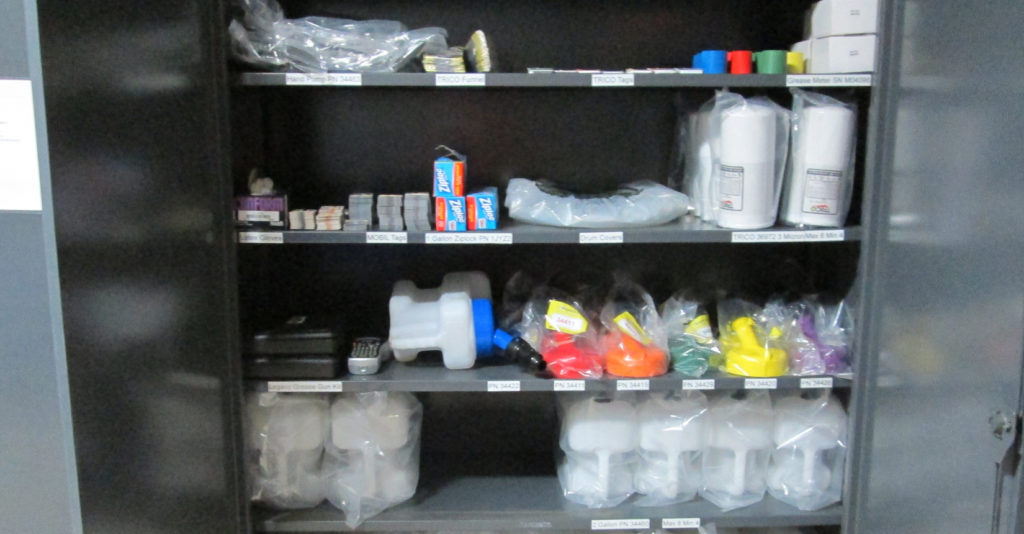
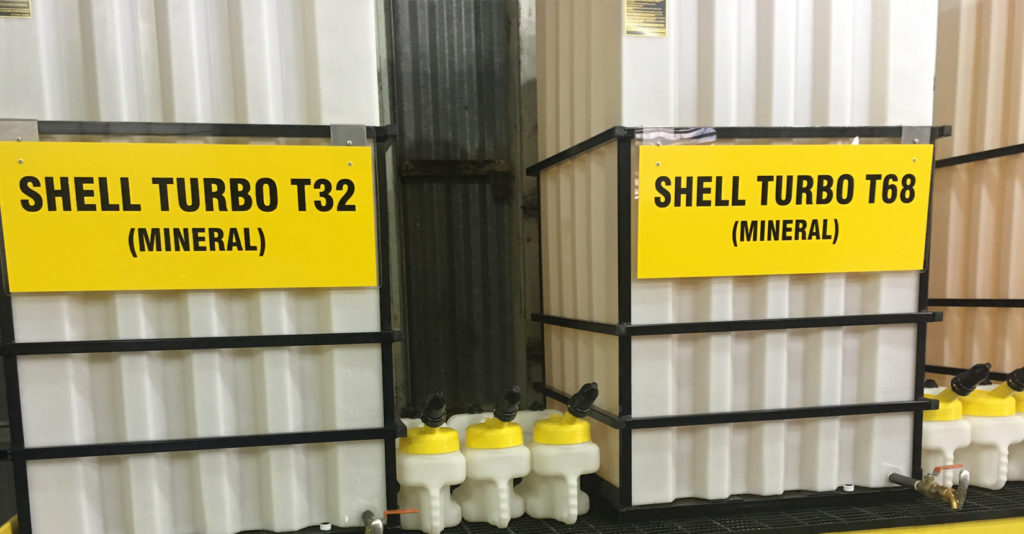
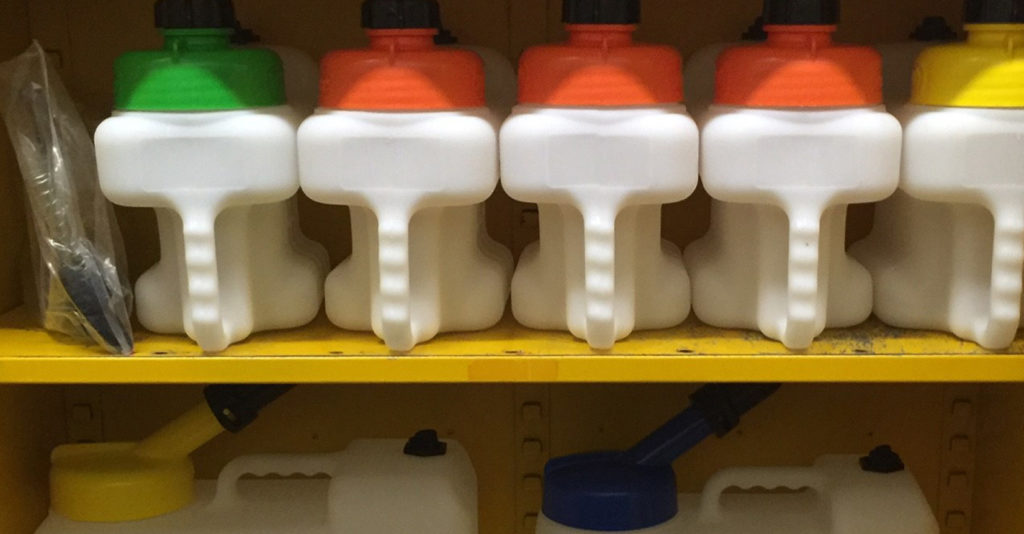
Trico Spectrum containers on duty
Spectrum containers in a safety cabinet
Proper use of a disposable Trico Fast Funnel®
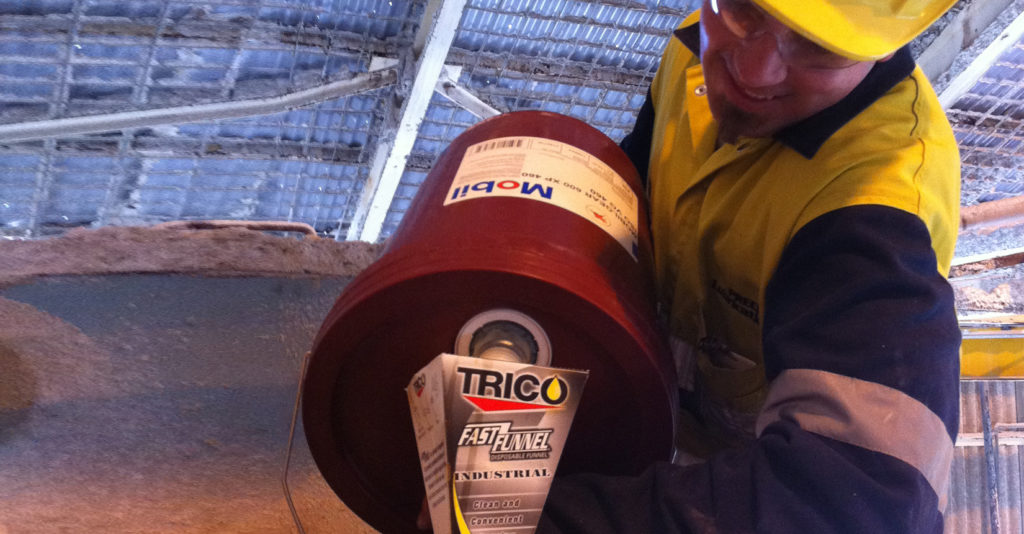
These practices will greatly reduce cross-contamination of different types of lubricants, as well as the ingression of particulate and water. So do yourself, your equipment and your organization a favor today and start taking clean oil transfer seriously.







